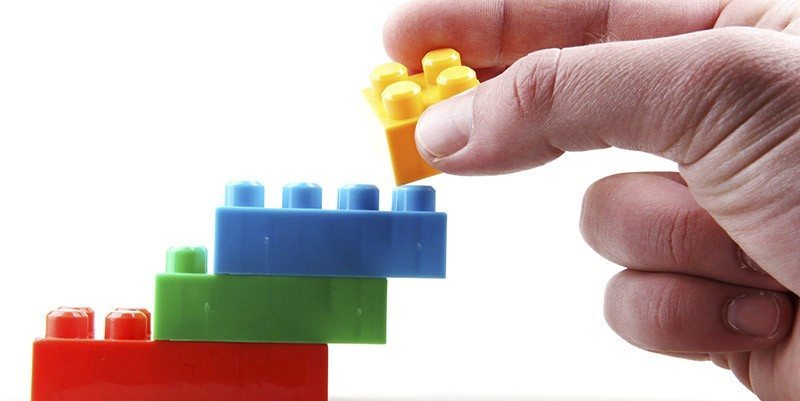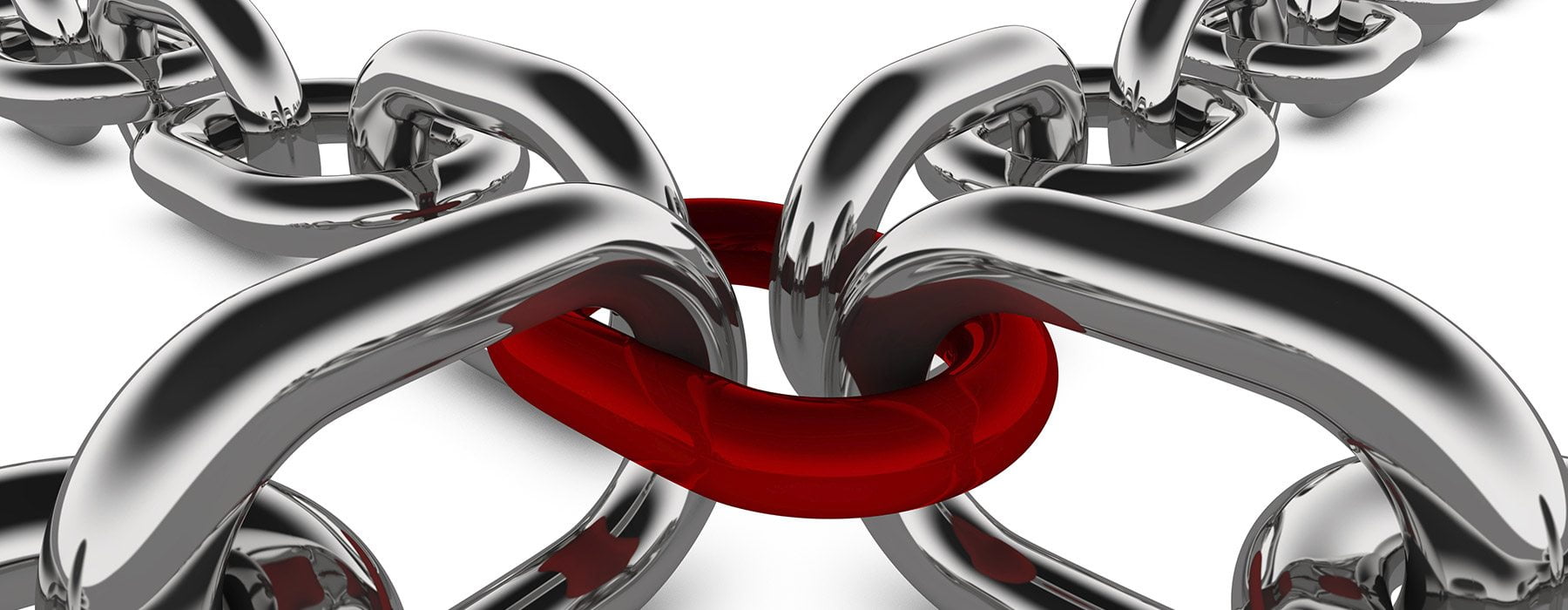In the last few years inbound link building and how it relates to rankings in the search engines has come under scrutiny. Formerly one of the most powerful ways to generate web traffic, Google has since become very particular about linking practices.
Link building has historically been abused and overused in an effort to get a site to the top of search engine results quickly. Because of this, lower quality sites were able to force themselves into the top search results.
Sites are now being penalized or downgraded due to poor back links associated with their domain. However, even with all of the negative press about inbound link building, there are positive ways to use them. You can avoid being penalized by creating quality inbound links that will bring about results.
The importance of link building

Link building is extremely important as it represents a search engine’s ability to build its web index. When you search something in Google you are not searching the entire World Wide Web, you are actually searching Google’s index of the web. Google builds this index by utilizing “spiders” or “crawlers” that go to each site and then travel from that site’s links to the next site’s links and so on. Links are used to both identify new web pages as well as determine a site’s result ranking.
When ranking a site, search engines take into consideration the page’s content quality as well as the number of outside links. The search engine evaluates the number of external website links as well as the quality of the sites that are linking to your site. If a lot of high-quality websites link to your site, your site’s search result ranking will be better.
Links came in as a ranking factor in the late 1990s when Larry Page, one of Google’s founders, invented PageRank. PageRank was used to evaluate the quality of a site, in part, based on the number of outside links to it. This was effective until online marketers learned how to manipulate PageRank and soon lower quality sites were showing up high in search rankings. Google has since begun to penalize sites that over use and abuse linking techniques. While Google’s algorithm for search ranking is a mystery, there are implications that indicate links still play a role. High quality links are still recognized as being an important factor in Google search ranking. Therefore the key to using links effectively, and avoiding penalties is by using high quality links.
How to properly build inbound links following the most recent guidelines

In order to build quality links, you must understand the most recent guidelines which govern best practices for link building. Keep in mind that context is key. In addition to having a high quality website link to your site, the context must be appropriate. If you’re a dog groomer, it’s not going to be helpful to you for a restaurant to link to your site. That simply doesn’t make sense. The right context is very important. If you’re outside links are not relevant to your line of business, your Google ranking will suffer because of it.
To determine the relevance of your linked sites consider the nature or subject matter of the sites. Are they within your same line of business or industry? If not, is there a section of the site related to your business or industry? There needs to be a connection between the linked site and your site if the industry and line of business are not similar. Now, if the dog groomer hosts a fundraiser at the restaurant, the link becomes supportive of search ranking. Focus on context and relevance, it makes a huge difference in search engine ranking.
Don’t choose just one inbound link building strategy. Google is constantly changing their ranking algorithms. To ensure you are competitive, you can’t just stick with one linking strategy. Widen your approach and make use of multiple strategies such as: using high quality content, making an effort to get recommendations from high quality sites, using social media to push traffic to content on your site, and syndicating or curating content from other sources.
Dare to be different and don’t copy your competition. Choose your own methods of link building. Using your own strategy can help you build your brand and will prevent consumers from getting confused between you and your competitor. Try identifying different key words than your competitor. This lessens the chance that the two of you will show up on the same search query and increases your odds of being selected.
Make sure your anchor text remains relevant and natural. Don’t use your keywords as anchor text for all of your links, Google doesn’t like this. Choose anchor text that is natural and relevant to ensure that the text supports your search engine ranking. An example of using keywords for anchor text is using “dog grooming services” as the anchor text for a particular link. It has to be natural and flow with the rest of the content.
Keep in mind that your link strategy should be about making Google happy. If you’re not focusing on that, your site is not going to make high ranking. Google has grown vastly in the last several years, increasing their understanding of links and their users. These two elements are the key components in search. What does the user want, and how can we identify the best quality link to give it to them. If you approach your linking strategy with this mind set, and be diverse in your tactics, your chances of success will be much higher.
With all of that said, do keep in mind that you must make your content appealing not just to Google, but especially to your end users as well. If your link strategy is only focused on appeasing Google your end users might suffer. So it is a balancing act. Typically good content with natural links will benefit all!
How to avoid being penalized or losing traffic in the future

Google’s ranking algorithm is not public knowledge, however, there are many techniques you should stay away from. Take a look at the following.
Duplicate Content. Google has identified that using content from other well-known and well ranked sites will poorly affect your ranking. Copy and pasting is not only illegal, it reflects poorly on your ranking. Use your own ideas, opinions and data. Poor quality guest posting is valued similarly to duplicate content. Google wants fresh, valuable content for its users.
Syndicated content has historically been a good way to build quality links back to your site. However, if your site has the same content that you have put out to other blogs or sites search engines might assume that you are copy and pasting. To avoid this problem your HTML must use “rel=canonical” attributes appropriately. Another strategy to avoid this is publishing your content on your site first, before it is published on other sites (However, while that makes you the owner of the content it can hurt the site also using your content so be careful!)
Google has expressed distaste in using doorway sites. A doorway site represents a page with no value to the user, only created to drive traffic to a specific website. This is a bad idea. Don’t do it.
Affiliate linking is a good way to build rank, when it is used appropriately. Effective affiliate linking must be done with high quality websites that contain quality and original content. The site’s content has to include more content besides the information about your site.
Keep in mind that Google algorithms are always changing. Given this, your linking strategy should also be changing and adapting to meet the needs of the new search environment. Always make an effort to stay on top of what’s up and coming.
When all else fails do a link detox

If you can’t figure out what’s wrong with your ranking, try a link detox. A link detox is otherwise known as a link audit. Auditing represents a necessary component of any effective strategy. You have to see what works and what doesn’t. Link auditing is extremely important if you have been penalized. The first step in initiating a link audit is signing up for Google Webmaster Tools. This will give you the opportunity to evaluate each site that links to your website. If you download the latest links and export to Google Docs you can see who is linking to your page. If you have been penalized you will need to evaluate the linked sites around the date of the penalty.
A paid subscription to Google Webmaster Tools provides you with a complete backlink profile. This would provide you with more information; the anchor text used, the status of the link, the rank of the link’s trust and many other elements. This data can help you determine if a link needs to be removed. Links on domains not indexed in Google should be removed. Links to sites that have malware and virus warnings should also be removed as should links with spam links. Keep in mind that some links may look great, until you look at the source code. You can identify hacked pages by looking at the source code or running the Google Search Command. Link network links should also be avoided. Paid links should always be removed when recovering from a penalty.
Your goal is avoid a penalty while still getting traffic to your site from links. In order to do this, listen to Google. Stick with the practices that Google currently likes and stay away from the ones that are known to lower rankings. You need to keep up with the trends and always be adapting your linking strategy.












